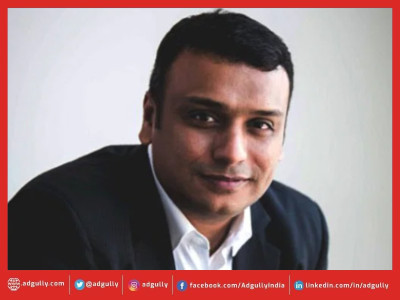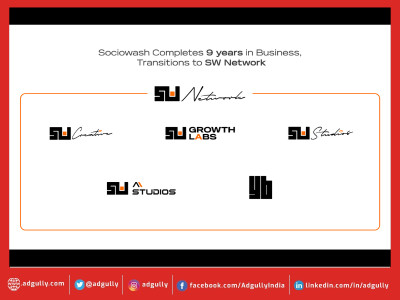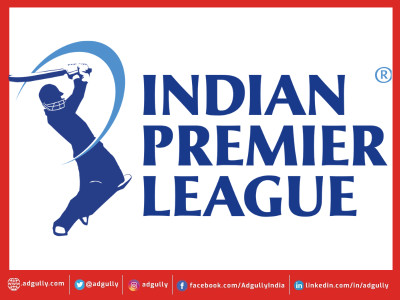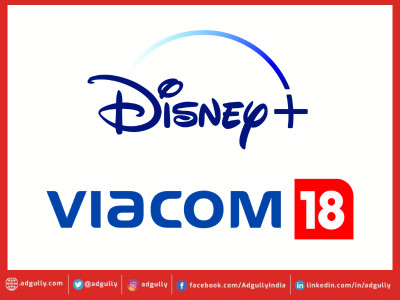Free-range parenting key to unlocking transformational growth: Sudhanshu Vats
The 8th edition of the CII Big Picture Summit got underway in the National Capital today (November 14, 2019). The annual gathering is aimed at discussing, deliberating and decoding policy options to unlock the potential of the M&E sector.
Sudhanshu Vats, Group CEO and MD, Viacom18, delivered the theme address at the Summit, where he stressed on creating, connecting and converging for transformational growth.
Following is a reproduction of Vats’ address:
Esteemed dignitaries on the dais, my industry colleagues, ladies & gentlemen – welcome to the 8th edition of the Big Picture Summit – an annual gathering aimed at discussing, deliberating and decoding policy options to unlock the potential of our M&E sector.
Many of you might be wondering – in your heart of hearts – that what’s so unique about the theme for this year. Create, connect & converge – are certainly not new terms. They’ve been used several times – in several permutations and combinations over the last 10 years at several industry events. So, I can’t discuss only those in the theme address. For me, the operative phrase is ‘transformational growth’. Why so? Because this is a very unique time for our industry and for India. Both, the industry and India for that matter – are seeing many ‘resets’ across the board. Our industry is seeing the entry of global firms that have enormous capital, patience and experience (Disney, TikTok, Google). At the same time, we are seeing emergence of smaller players, better talent and balancing of value chain within the sector with all the constituents beginning to partake in the value creation. We are also witnessing a Direct to Consumer revolution with OTT platforms driving consumption fueled by inexpensive data plans. Our country is witnessing a rethink on all types of legacy matters – be the matters of national security (article 370 of constitution), society (section 377 of IPC), economy (Insolvency & Bankruptcy code) and so on. This reset is coupled with the consumer journey from $ 2000 per capita income to $ 4000 per capita income in the next 5-7 years. For our sector’s growth to be transformational, in my opinion, it has to meet two conditions:
- The growth has to be more widely distributed within the value chain – in fact it must be over-indexed towards smaller participants who wield lesser power than their larger counterparts. This will create a more competitive industry with a strong base – one that is more resilient to disruptions. That in my mind is very critical. For example: In the past, writers in India weren’t receiving as much due credit and value that they are now.
- The growth has to ensure a rightful share and size at a national and global level.
- Nationally, we need to move the sector’s scale from 1% share of GDP to about 2% of GDP like the developed world.
- Globally, we need to top the tables not just when it comes to metrics that measure product output (India is the 2nd biggest pay TV market in the world, largest producer of films) and audience metrics (world’s largest English newspaper audience, world’s 2nd largest internet user base etc.) but actual revenue and spend pools (even if we take the most liberal estimates of our industry size - say 26 Bn USD- convert that in PPP terms – say 100 Bn USD – we are about 14% of the US industry which is closer to 780 Bn USD). These are only back-of-the- envelope calculations and there might be some differences when it comes to methodologies, exact numbers etc. but you can’t deny that there’s still a huge differential. In PPP terms, India’s overall economy is ~50% of the US economy.
This growth – transformational growth – can be a huge driver of the 5 Trillion USD Indian economy.
What is needed for this transformational growth?
Any industry’s growth can be attributed to the actions of 3 main actors: firms (Supply side), consumers (Demand side) and policy makers.
India has no shortage of firms. We have many legacy media businesses driven by Indian managements that are robust and rich. Also, as an open media market, several foreign firms have entered India and tasted scale and complexity. So, we’re covered on that front. Yes, there is scarcity of some types of manpower – but with time that will also get resolved. Like I mentioned before, there is no shortage of consumers either. Our content does travel the world. Yes, we are more or less diaspora focused, and our addressable market comprise (mainly) South Asian diaspora, but recent successes of India digital originals (Sacred Games scored 100% on Rotten Tomatoes) and Indian films (Andhadhun in China) demonstrate that we have the potential to make a global dent. Even if we look at South Asian diaspora, that’s a huge market. That leaves us with the third variable – policy makers. This is where I’d like to dovetail the other three parts of the theme for Big Picture – Create, Connect & Converge.
Policy makers can drive huge impact on all these aspects. To a large extent, we are already seeing action on all fronts. On ‘create’ there’s a revamp underway of the copyright regime, the cinematograph act is with a standing committee in parliament, there’s some work that needs to be done to create a strong talent pipeline across creative and technical skillsets – the institute for animation & gaming still needs to be setup – but a lot of work is underway. On ‘connect’, we have the new NTO which is still settling in – it’s a mammoth change – kudos to TRAI for acting on it, there’s been a directive on Net Neutrality, some work happening on personal data protection – the bill is to be tabled soon in parliament – a lot of action there as well. Finally, on ‘converge’, there is this realization that there is negligible merit in slicing up our sector across different media platforms and regulating them as separate entities as convergence is now a reality – you can watch TV content on an app, podcasts have blurred the line between radio and internet, almost all print publications have a digital avatar and so on. I think this also means that regulation needs to converge – so that there is no scope for arbitrage. For instance, I can launch a digital OTT platform and charge whatever I want – play how many ever ads I want – but when I launch a TV channel I have to abide by a set of tariffs and not exceed 12 mins of advertising in an hour etc.
More importantly, we need to agree to a liberal mindset with faith in the consumer market’s ability to keep us all disciplined. I want to draw your attention to a conversation I just had with someone from my team – who became a parent recently. Like all first parents, he too was anxious about parenting and all its challenges. I would like to share with you today what I shared with him. I am taking advantage of the fact that this message will reach policymakers – who are akin to the ‘parents’ of entities like us who are trying to grow. In the late 90s and early 2000s, this concept of ‘helicopter parenting’ became popular. It meant hovering around your children to ‘swoop’ in and help them in case they needed support. Over time, this led to over protective parents who actually stunted the ability of their children to transition into independent adulthood. The intention of the parents was always good – but it backfired when it came to the outcome. I sometime feel that regulators and policy makers might be making the same mistake when it comes to the M&E sector today. No one is doubting your intention, but the outcome could be different. This might be disastrous if you recall the point I made earlier, we have the potential for transformational growth. We should not look back later and regret our actions. ‘Over parenting’, like over regulating makes it impossible to ‘cut the (umbilical) cord’ (no pun intended!). And there’s no way we can compete globally if we don’t cut the cord! What is the alternative then? In the world of child psychology – it’s called ‘free-range’ parenting. The methodology behind this parenting style is to avoid hovering like a ‘helicopter parent’ by letting children experience life as it happens. That translates to less anxiety, less stifling behaviors and less coddling. We need our policy makers to replicate a similar philosophy of regulation for us. Let us be. Let the dust settle. Yes, we will make mistakes. Yes, we will be naughty at times. But we will learn. And that will make us globally competitive. For instance, we’ve just witnessed the most landmark reform in the world of Indian Pay TV broadcasting, ever. Of course, it’s not perfect – but tweaking it every month and quarter will have disastrous consequences. Maybe, in ‘free-range’ style, taking a break for say 2 years – and watching us closely – will be more beneficial for us in the long run. We provide employment (direct & indirect) to over 5 Mn Indians and can take this to 10 Mn in 3-4 years – creating transformational growth. Our export potential is 10 Bn USD -more than 10x of what it is today – and we don’t need exhaustive, difficult to negotiate multilateral agreements to get there. We just need to freedom to create, connect and converge. This is totally in sync with Prime Minister Narendra Modi’s vision of Maximum governance and minimum government.
I won’t take more of your time. I hope you benefit from and contribute to the stimulating discussions that will take place over today and tomorrow. We have the potential for transformational growth. ‘Free-range parenting’ might be the key to unlock it.















Share
Facebook
YouTube
Tweet
Twitter
LinkedIn